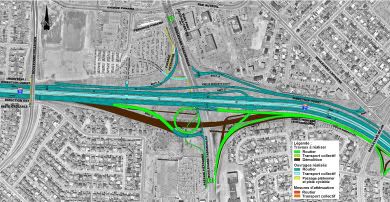A
afransen TO
Guest
Given that Toronto has sprawled out of all sense of proportion, it would seem that the cost of providing fast, efficient, high volume transit would be prohibitive if we relied on Toronto's traditional subway/bus feeder system. While it's true that BRT cannot handle the passenger loads that subway can, in the suburbs this isn't really necessary.
So, saying that the GTTA is established and isn't a resounding failure, what would be a better course of action; business as usual occasional subway expansion, or diverting a few billion to creating a region-wide BRT system with the eventual goal that any new greenfield development would have BRT service as a prerequisite service like sewers and roads? This doesn't preclude subway expansion, but it would help defuse the political motivations behind it, by requiring that any new subway would be built as a response to overloaded BRT lines. Hopefully then we would no longer have subways built to enrich the friends and family of certain Ontario finance ministers.
I've been doing some reading on Curitiba and how they've responded to challenges facing that city in light of the fact that there wasn't an abundance of wealth to address their problems. While Toronto is by comparison incredibly wealthy, we still have the same problem of having very little resources dedicated or realistically available to solve our problems.
I think this is an interesting topic, and while I'm sure the planning types have already beaten this horse to death in their experience, I think it might be time to talk about it again for the benefit of those who might be less familiar with it.
So, saying that the GTTA is established and isn't a resounding failure, what would be a better course of action; business as usual occasional subway expansion, or diverting a few billion to creating a region-wide BRT system with the eventual goal that any new greenfield development would have BRT service as a prerequisite service like sewers and roads? This doesn't preclude subway expansion, but it would help defuse the political motivations behind it, by requiring that any new subway would be built as a response to overloaded BRT lines. Hopefully then we would no longer have subways built to enrich the friends and family of certain Ontario finance ministers.
I've been doing some reading on Curitiba and how they've responded to challenges facing that city in light of the fact that there wasn't an abundance of wealth to address their problems. While Toronto is by comparison incredibly wealthy, we still have the same problem of having very little resources dedicated or realistically available to solve our problems.
I think this is an interesting topic, and while I'm sure the planning types have already beaten this horse to death in their experience, I think it might be time to talk about it again for the benefit of those who might be less familiar with it.







